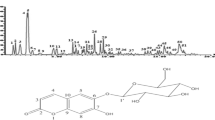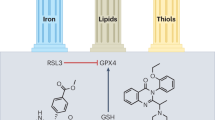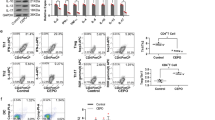Abstract
Acute renal failure—characterized by a sudden loss of the ability of the kidneys to excrete nitrogenous waste, and to maintain electrolyte homeostasis and fluid balance—is a frequently encountered clinical problem, particularly in the intensive care unit. Unfortunately, advances in supportive interventions have done little to reduce the high mortality associated with this condition. Might erythropoietin (EPO) have utility as a therapeutic agent in acute renal failure? This hormone mediates anti-apoptotic effects in the bone marrow, facilitating maturation and differentiation of erythroid progenitors. New evidence indicates that EPO also exerts anti-apoptotic effects in the brain, heart and vasculature, which can limit the degree of organ damage. Here, we review the emerging biological role of EPO in the kidney and the pathophysiology of ischemia–reperfusion injury in an attempt to understand the therapeutic potential of EPO in acute renal failure.
Key Points
-
Erythropoietin (EPO) is produced in the kidney in response to hypoxia, and exerts anti-apoptotic effects in bone marrow, brain, heart and vasculature
-
Data from animal models indicate that EPO can protect the kidney when administered either before or after onset of an ischemic insult
-
Beneficial effects of EPO in human acute renal failure trials have not yet been detected
-
New EPO derivatives (e.g. carbamylated EPO and desialylated EPO) are more likely to be clinically applicable
This is a preview of subscription content, access via your institution
Access options
Subscribe to this journal
Receive 12 print issues and online access
$209.00 per year
only $17.42 per issue
Buy this article
- Purchase on Springer Link
- Instant access to full article PDF
Prices may be subject to local taxes which are calculated during checkout


Similar content being viewed by others
References
Lameire N et al. (2005) Acute renal failure. Lancet 365: 417–430
Nash K et al. (2002) Hospital-acquired renal insufficiency. Am J Kidney Dis 39: 930–936
Mehta RL et al. (2004) Spectrum of acute renal failure in the intensive care unit: the PICARD experience. Kidney Int 66: 1613–1621
Cameron JS (1986) Acute renal failure—the continuing challenge. QJM 59: 337–338
Thakar CV et al. (2003) ARF after open-heart surgery: Influence of gender and race. Am J Kidney Dis 41: 742–751
Rosen S et al. (2001) Difficulties in understanding human “acute tubular necrosis”: Limited data and flawed animal models. Kidney Int 60: 1220–1224
Hirschberg R et al. (1999) Multicenter clinical trial of recombinant human insulin-like growth factor I in patients with acute renal failure. Kidney Int 55: 2423–2432
Ding H et al. (1993) Recombinant human insulin-like growth factor-I accelerates recovery and reduces catabolism in rats with ischemic acute renal failure. J Clin Invest 91: 2281–2287
Maxwell PH et al. (1993) Identification of the renal erythropoietin-producing cells using transgenic mice. Kidney Int 44: 1149–1162
Maxwell P (2003) HIF-1: an oxygen response system with special relevance to the kidney. J Am Soc Nephrol 14: 2712–2722
Cai Z et al. (2003) Hearts from rodents exposed to intermittent hypoxia or erythropoietin are protected against ischemia-reperfusion injury. Circulation 108: 79–85
Ruscher K et al. (2002) Erythropoietin is a paracrine mediator of ischemic tolerance in the brain: evidence from an in vitro model. J Neurosci 22: 10291–10301
Matsumoto M et al. (2003) Induction of renoprotective gene expression by cobalt ameliorates ischemic injury of the kidney in rats. J Am Soc Nephrol 14: 1825–1832
Nagai A et al. (2001) Erythropoietin and erythropoietin receptors in human CNS neurons, astrocytes, microglia, and oligodendrocytes grown in culture. J Neuropathol Exp Neurol 60: 386–392
Bernaudin M et al. (1999) A potential role for erythropoietin in focal permanent cerebral ischemia in mice. J Cereb Blood Flow Metab 19: 643–651
Sakanaka M et al. (1998) In vivo evidence that erythropoietin protects neurons from ischemic damage. Proc Natl Acad Sci USA 95: 4635–4640
Grimm C et al. (2002) HIF-1-induced erythropoietin in the hypoxic retina protects against light-induced retinal degeneration. Nat Med 8: 718–724
Maiese K et al. (2004) Erythropoietin in the brain: can the promise to protect be fulfilled? Trends Pharmacol Sci 25: 577–583
Westenfelder C et al. (1999) Human, rat, and mouse kidney cells express functional erythropoietin receptors. Kidney Int 55: 808–820
Witthuhn BA et al. (1993) JAK2 associates with the erythropoietin receptor and is tyrosine phosphorylated and activated following stimulation with erythropoietin. Cell 74: 227–236
Fisher JW (2003) Erythropoietin: physiology and pharmacology update. Exp Biol Med (Maywood) 228: 1–14
HaseyamaY et al. (1999) Phosphatidylinositol 3-kinase is involved in the protection of primary cultured human erythroid precursor cells from apoptosis. Blood 94: 1568–1577
Digicaylioglu M and Lipton SA (2001) Erythropoietin-mediated neuroprotection involves cross-talk between Jak2 and NF-κB signalling cascades. Nature 412: 641–647
Fishbane S et al. (2004) Cytoprotection by darbepoetin/epoetin α in pig tubular and mouse mesangial cells. Kidney Int 65: 452–458
Sutton TA et al. (2002) Microvascular endothelial injury and dysfunction during ischemic acute renal failure. Kidney Int 62: 1539–1549
Molitoris BA and Sutton TA (2004) Endothelial injury and dysfunction: role in the extension phase of acute renal failure. Kidney Int 66: 496–499
Brezis M and Rosen S (1995) Hypoxia of the renal medulla—its implications for disease. N Engl J Med 332: 647–655
Zager RA et al. (1990) Regional responses within the kidney to ischemia: assessment of adenine nucleotide and catabolite profiles. Biochim Biophys Acta 1035: 29–36
Dagher PC (2000) Modeling ischemia in vitro: selective depletion of adenine and guanine nucleotide pools. Am J Physiol Cell Physiol 279: C1270–C1277
Buhl MR (1979) The predictive value of 5′-adenine nucleotide depletion and replenishment in ischaemic rabbit kidney tissue. Int Urol Nephrol 11: 325–333
Feldenberg LR et al. (1999) Partial ATP depletion induces Fas- and caspase-mediated apoptosis in MDCK cells. Am J Physiol 276: F837–F846
Dagher PC (2004) Apoptosis in ischemic renal injury: roles of GTP depletion and p53. Kidney Int 66: 506–509
Edelstein CL et al. (1995) The role of cysteine proteases in hypoxia-induced rat renal proximal tubular injury. Proc Natl Acad Sci USA 92: 7662–7666
Molitoris BA et al. (1992) Cytoskeleton disruption and apical redistribution of proximal tubule Na(+)-K(+)-ATPase during ischemia. Am J Physiol 263: F488–F495
Zuk A et al. (1998) Polarity, integrin, and extracellular matrix dynamics in the postischemic rat kidney. Am J Physiol 275: C711–C731
Nath KA and Norby SM (2000) Reactive oxygen species and acute renal failure. Am J Med 109: 665–678
Noiri E et al. (2001) Oxidative and nitrosative stress in acute renal failure. Am J Physiol Renal Physiol 281: F948–957
Lieberthal W et al. (1998) Necrosis and apoptosis in acute renal failure. Semin Nephrol 18: 505–518
Castaneda MP et al. (2003) Activation of mitochondrial apoptotic pathways in human renal allografts after ischemia-reperfusion injury. Transplantation 76: 50–54
Daemen MA et al. (2002) Apoptosis and inflammation in renal reperfusion injury. Transplantation 73: 1693–1700
Kaushal GP et al. (1998) Identification of gene family of caspases in rat kidney and altered expression in ischemia-reperfusion injury. Am J Physiol 274: F587–F595
Singh AB et al. (2002) Cloning and expression of rat caspase-6 and its localization in renal ischemia/reperfusion injury. Kidney Int 62: 106–115
Feldenberg LR et al. (1999) Partial ATP depletion induces Fas- and caspase-mediated apoptosis in MDCK cells. Am J Physiol 276: F837–F846
Daemen MA et al. (1999) Inhibition of apoptosis induced by ischemia-reperfusion prevents inflammation. J Clin Invest 104: 541–549
Daemen MA et al. (2001) Apoptosis and chemokine induction after renal ischemia-reperfusion. Transplantation 71: 1007–1011
Yang CW et al. (2003) Preconditioning with erythropoietin protects against subsequent ischemia-reperfusion injury in rat kidney. FASEB J 17: 1754–1755
Vesey DA et al. (2004) Erythropoietin protects against ischaemic acute renal injury. Nephrol Dial Transplant 19: 348–355
Sharples EJ et al. (2004) Erythropoietin protects the kidney against the injury and dysfunction caused by ischemia-reperfusion. J Am Soc Nephrol 15: 2115–2124
Huang C et al. (1992) Study of the actions of human recombinant erythropoietin on rat renal haemodynamics. Clin Sci (Lond) 83: 453–459
Abdelrahman M et al. (2004) Erythropoietin attenuates the tissue injury associated with haemorrhagic shock and myocardial ischaemia. Shock 22: 63–69
Lieberthal W et al. (1989) Renal ischemia and reperfusion impair endothelium-dependent vascular relaxation. Am J Physiol 256: F894–F900
Conger JD et al. (1995) Increased nitric oxide synthase activity despite lack of response to endothelium-dependent vasoconstrictors in postischaemic acute renal failure in rats. J Clin Invest 96: 631–638
Yamamoto T et al. (2002) Intravital videomicroscopy of peritubular capillaries in renal ischemia. Am J Physiol Renal Physiol 282: F1150–F1155
Brodsky SV et al. (2002) Endothelial dysfunction in ischemic acute renal failure: rescue by transplanted endothelial cells. Am J Physiol Renal Physiol 282: F1140–F1149
Chong ZZ et al. (2002) Erythropoietin is a novel vascular protectant through activation of Akt1 and mitochondrial modulation of cysteine proteases. Circulation 106: 2973–2979
Kanagy NL et al. (2003) Erythropoietin administration in vivo increases vascular nitric oxide synthase expression. J Cardiovasc Pharmacol 42: 527–533
Scalera F et al. (2005) Erythropoietin increases asymmetric dimethylarginine in endothelial cells: role of dimethylarginine dimethylaminohydrolase. J Am Soc Nephrol 16: 892–898
Buemi M et al. (2004) Recombinant human erythropoietin stimulates angiogenesis and healing of ischemic skin wounds. Shock 22: 169–173
Heeschen C et al. (2003) Erythropoietin is a potent physiologic stimulus for endothelial progenitor cell mobilization. Blood 15: 1340–1346
Bahlmann FH et al. (2003) Endothelial progenitor cell proliferation and differentiation is regulated by erythropoietin. Kidney Int 64: 1648–1652
Patel NS et al. (2004) Pretreatment with EPO reduces the injury and dysfunction caused by ischemia/reperfusion in the mouse kidney in vivo. Kidney Int 66: 983–989
Goligorsky MS (2005) Whispers and shouts in the pathogenesis of acute renal ischaemia. Nephrol Dial Transplant 20: 261–266
Friedewald JJ and Rabb H (2004) Inflammatory cells in ischemic acute renal failure. Kidney Int 66: 486–491
De Greef KE et al. (2003) ICAM-1 expression and leukocyte accumulation in inner stripe of outer medulla in early phase of ischemic compared to HgCl2-induced ARF. Kidney Int 63: 1697–1707
Chakravorty SJ et al. (2002) Fractalkine expression on human renal tubular epithelial cells: potential role in mononuclear cell adhesion. Clin Exp Immunol 129: 150–159
Daha MR and van Kooten C (2000) Is the proximal tubular cell a proinflammatory cell? Nephrol Dial Transplant 15 (Suppl 6): S41–S43
Ysebaert DK et al. (2000) Identification and kinetics of leukocytes after severe ischemia/reperfusion renal injury. Nephrol Dial Transplant 15: 1562–1574
De Greef KE et al. (1998) Neutrophils and acute ischemia-reperfusion injury. J Nephrol 11: 110–122
Kelly KJ et al. (1994) Antibody to intercellular adhesion molecule 1 protects the kidney against ischemic injury. Proc Natl Acad Sci USA 91: 812–816
Friedewald JJ and Rabb H (2004) Inflammatory cells in ischaemic acute renal failure. Kidney Int 66: 480–485
Pull SL et al. (2005) Activated macrophages are an adaptive element of the colonic epithelial progenitor niche necessary for regenerative responses to injury. Proc Natl Acad Sci USA 102: 99–104
Bonventre JV (2003) Dedifferentiation and proliferation of surviving epithelial cells in acute renal failure. J Am Soc Nephrol 14 (Suppl 1): S55–S61
Witzgall R et al. (1994) Localization of proliferating cell nuclear antigen, vimentin, c-Fos, and clusterin in the postischemic kidney. Evidence for a heterogenous genetic response among nephron segments, and a large pool of mitotically active and dedifferentiated cells. J Clin Invest 93: 2175–2188
Maeshima A et al. (2003) Identification of renal progenitor-like tubular cells that participate in the regeneration processes of the kidney. J Am Soc Nephrol 14: 3138–3146
Arriero M et al. (2004) Adult skeletal muscle stem cells differentiate into endothelial lineage and ameliorate renal dysfunction after acute ischemia. Am J Physiol Renal Physiol 287: F621–627
Lin F et al. (2003) Hematopoietic stem cells contribute to the regeneration of renal tubules after renal ischemia-reperfusion injury in mice. J Am Soc Nephrol 14: 1188–1199
Nygren JM et al. (2004) Bone marrow-derived hematopoietic cells generate cardiomyocytes at a low frequency through cell fusion, but not transdifferentiation. Nat Med 10: 494–501
Togel F et al. (2005) Administered mesenchymal stem cells protect against ischemic acute renal failure through differentiation-independent mechanisms. Am J Physiol Renal Physiol 289: F31–F42
Vaziri ND et al. (1994) Erythropoietin enhances recovery from cisplatin-induced acute renal failure. Am J Physiol 266: F360–F366
Leist M et al. (2004) Derivatives of erythropoietin that are tissue protective but not erythropoietic. Science 305: 239–242
Fiordaliso F et al. (2005) A nonerythropoietic derivative of erythropoietin protects the myocardium from ischemia-reperfusion injury. Proc Natl Acad Sci USA 102: 2046–2051
Brines M et al. (2004) Erythropoietin mediates tissue protection through an erythropoietin and common beta-subunit heteroreceptor. Proc Natl Acad Sci USA 101: 14907–14912
Jubinsky PT et al. (1993) A low-affinity human granulocyte-macrophage colony-stimulating factor/murine erythropoietin hybrid receptor functions in murine cell lines. Blood 81: 587–591
Namiuchi S et al. (2005) High serum erythropoietin level is associated with smaller infarct size in patients with acute myocardial infarction who undergo successful primary percutaneous coronary intervention. J Am Coll Cardiol 45: 1406–1412
Ehrenreich H et al. (2002) Erythropoietin therapy for acute stroke is both safe and beneficial. Mol Med 8: 495–505
Bahlmann FH et al. (2004) Low-dose therapy with the long-acting erythropoietin analogue darbepoetin α persistently activates endothelial Akt and attenuates progressive organ failure. Circulation 110: 1006–1012
Stohlawetz PJ et al. (2000) Effects of erythropoietin on platelet reactivity and thrombopoiesis in humans. Blood 95: 2983–2989
Singbartl K et al. (2000) Protection from ischemia-reperfusion induced severe acute renal failure by blocking E-selectin. Crit Care Med 28: 2507–2514
Henke M et al. (2003) Erythropoietin to treat head and neck cancer patients with anaemia undergoing radiotherapy: randomised, double-blind, placebo-controlled trial. Lancet 362: 1255–1260
Sigounas G et al. (2004) Erythropoietin modulates the anticancer activity of chemotherapeutic drugs in a murine lung cancer model. Cancer Lett 214: 171–179
Gong H et al. (2004) EPO and alpha-MSH prevent ischemia/reperfusion-induced down-regulation of AQPs and sodium transporters in rat kidney. Kidney Int 66: 683–695
Acknowledgements
EJ Sharples is supported by a training fellowship from the National Kidney Research Fund (TF17/2004). C Thiemermann is supported in part by the William Harvey Research Foundation.
Author information
Authors and Affiliations
Corresponding author
Ethics declarations
Competing interests
MM Yaqoob has received research support from Amgen and Roche.
Rights and permissions
About this article
Cite this article
Sharples, E., Thiemermann, C. & Yaqoob, M. Mechanisms of Disease: cell death in acute renal failure and emerging evidence for a protective role of erythropoietin. Nat Rev Nephrol 1, 87–97 (2005). https://doi.org/10.1038/ncpneph0042
Received:
Accepted:
Issue Date:
DOI: https://doi.org/10.1038/ncpneph0042
This article is cited by
-
An orally delivered microbial cocktail for the removal of nitrogenous metabolic waste in animal models of kidney failure
Nature Biomedical Engineering (2020)
-
Expanding roles of the hypoxia-response network in chronic kidney disease
Clinical and Experimental Nephrology (2016)
-
The erythropoietin receptor is a downstream effector of Klotho-induced cytoprotection
Kidney International (2013)
-
The influence of EPO and hypothermia on the kidneys of rats after perinatal asphyxia
Pediatric Nephrology (2012)
-
Tetrahydrobiopterin protects the kidney from ischemia–reperfusion injury
Kidney International (2010)



